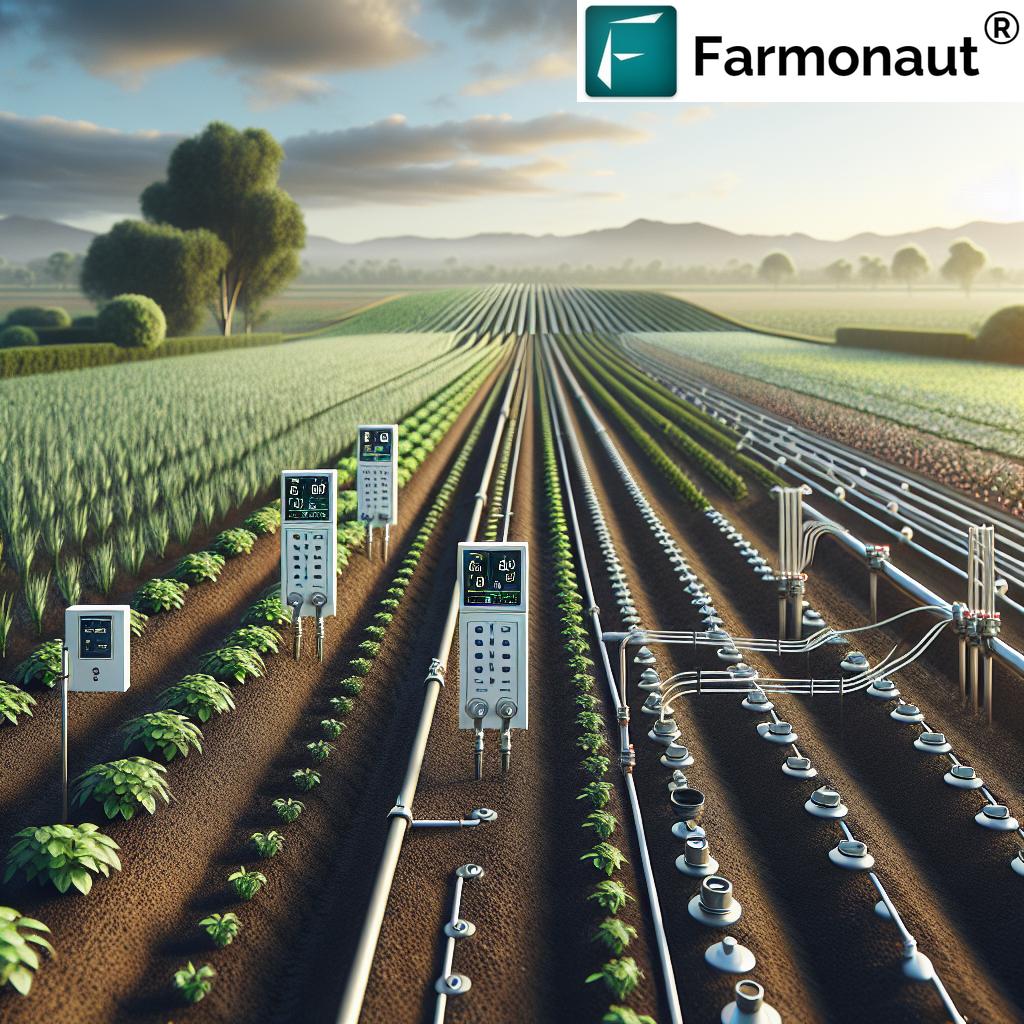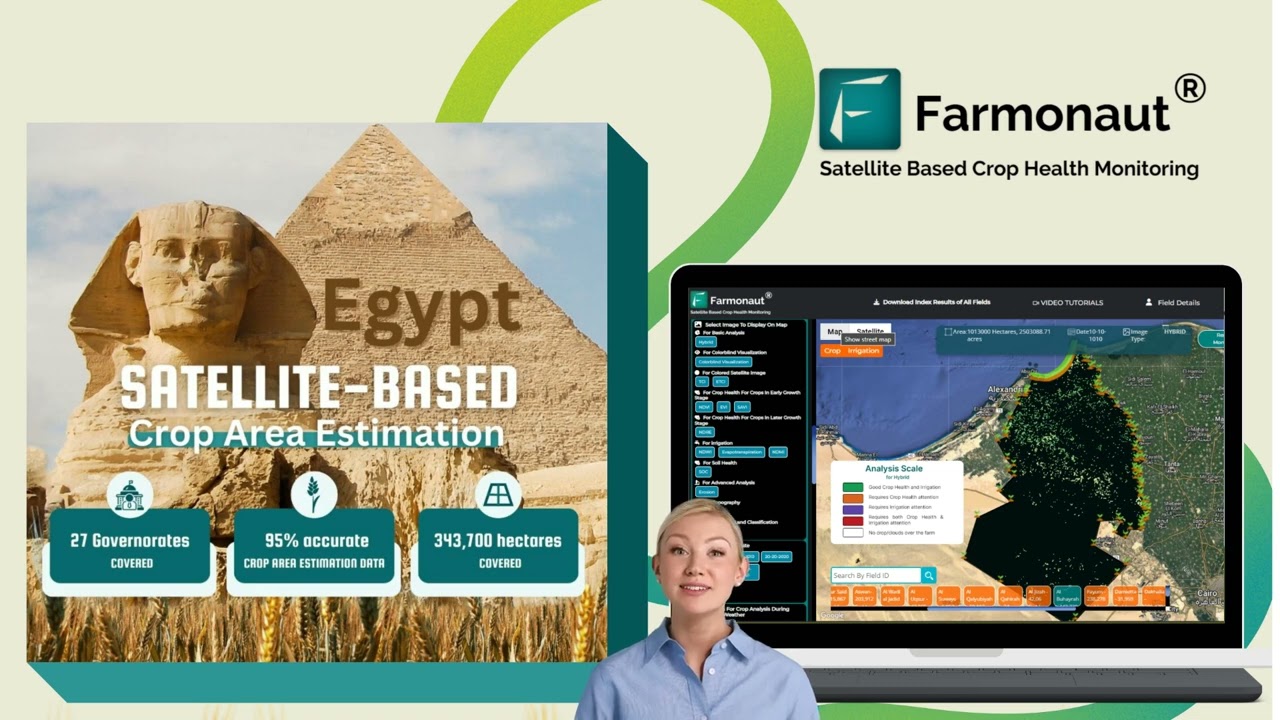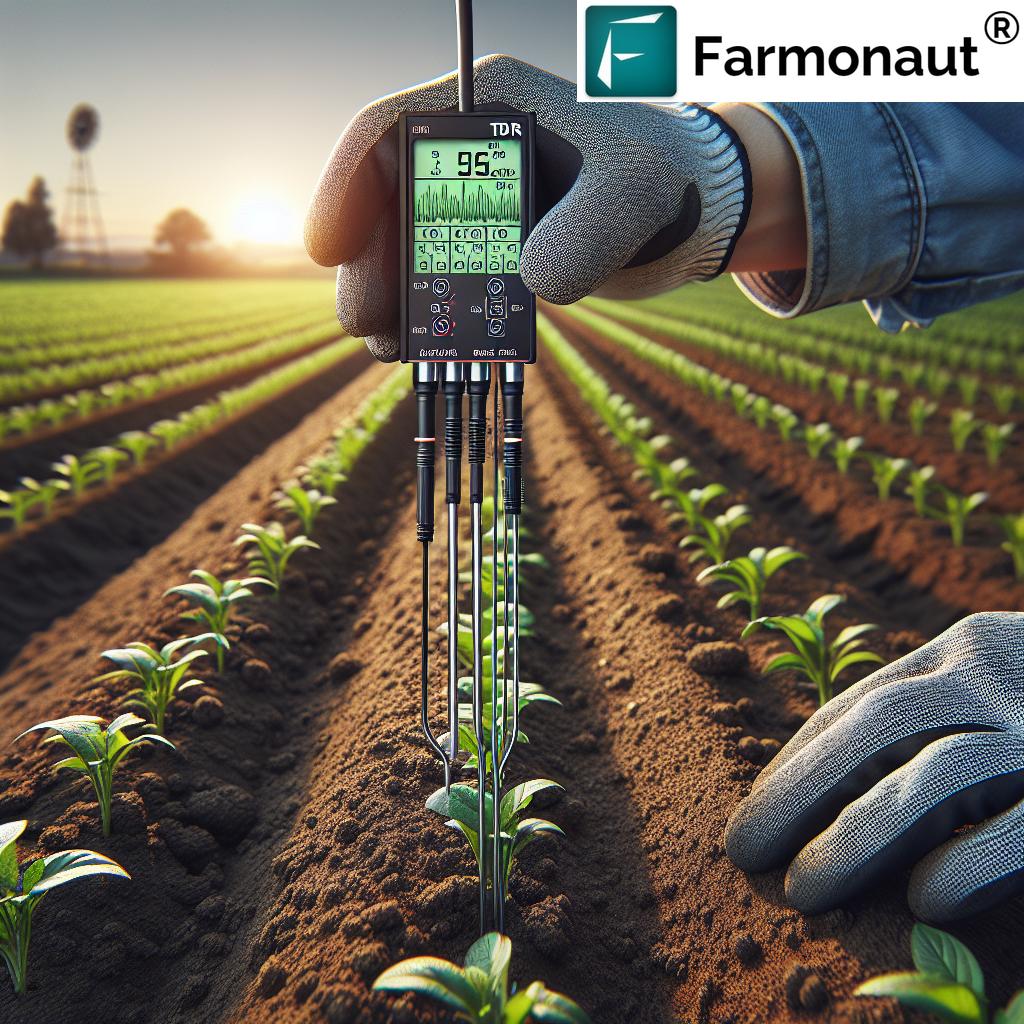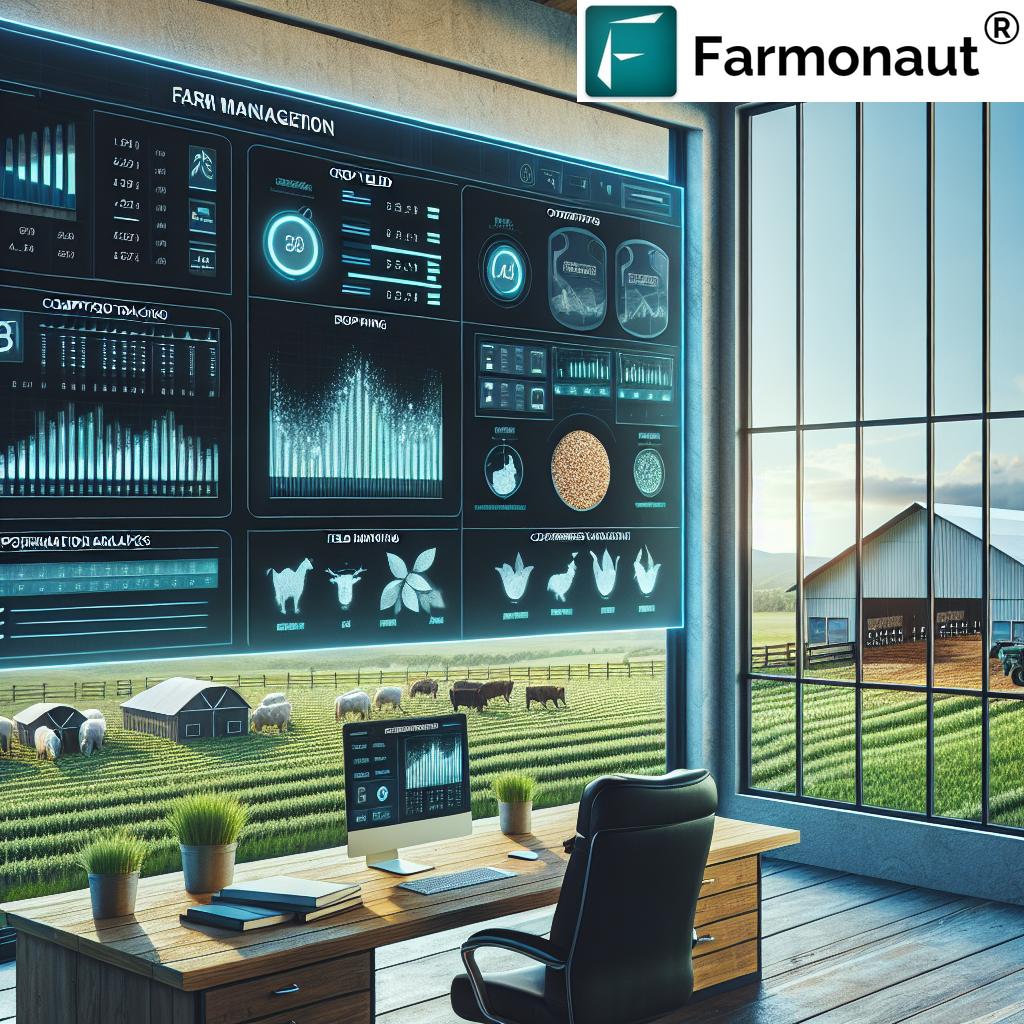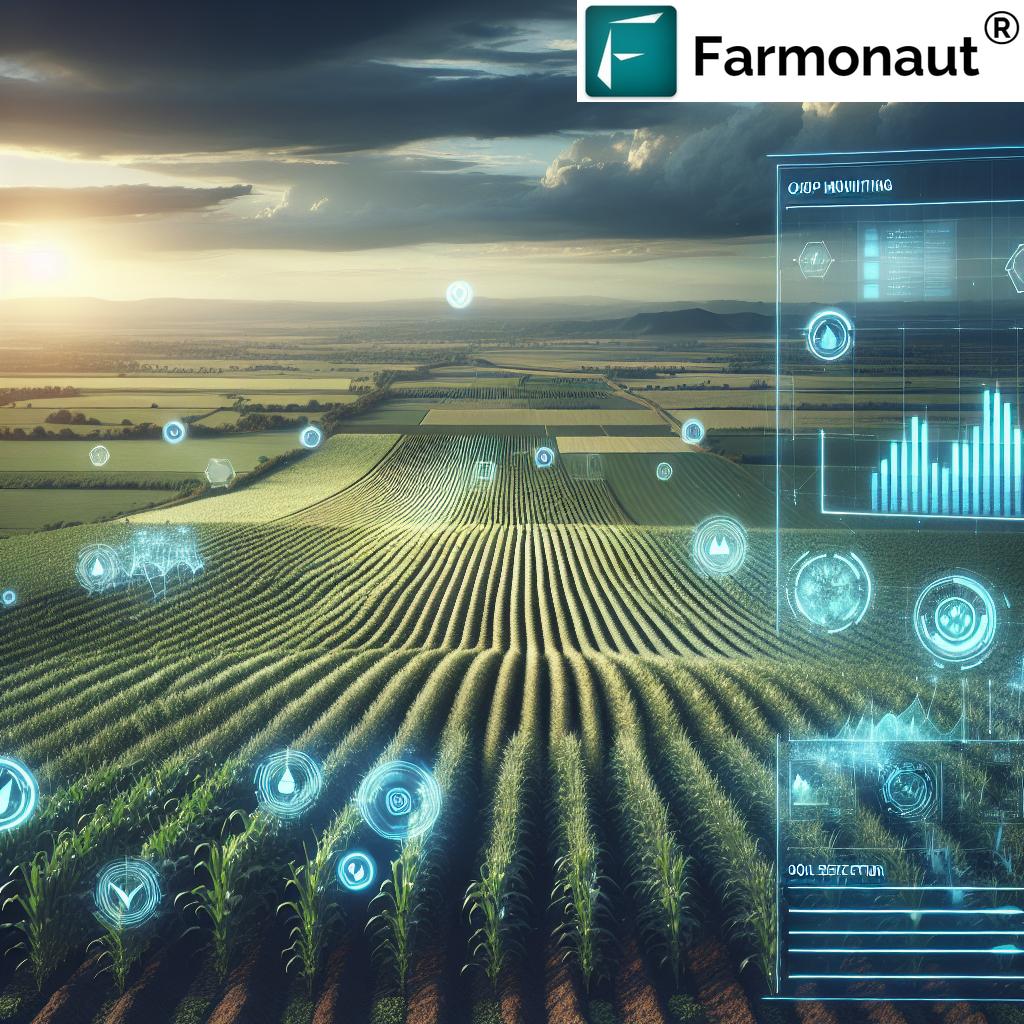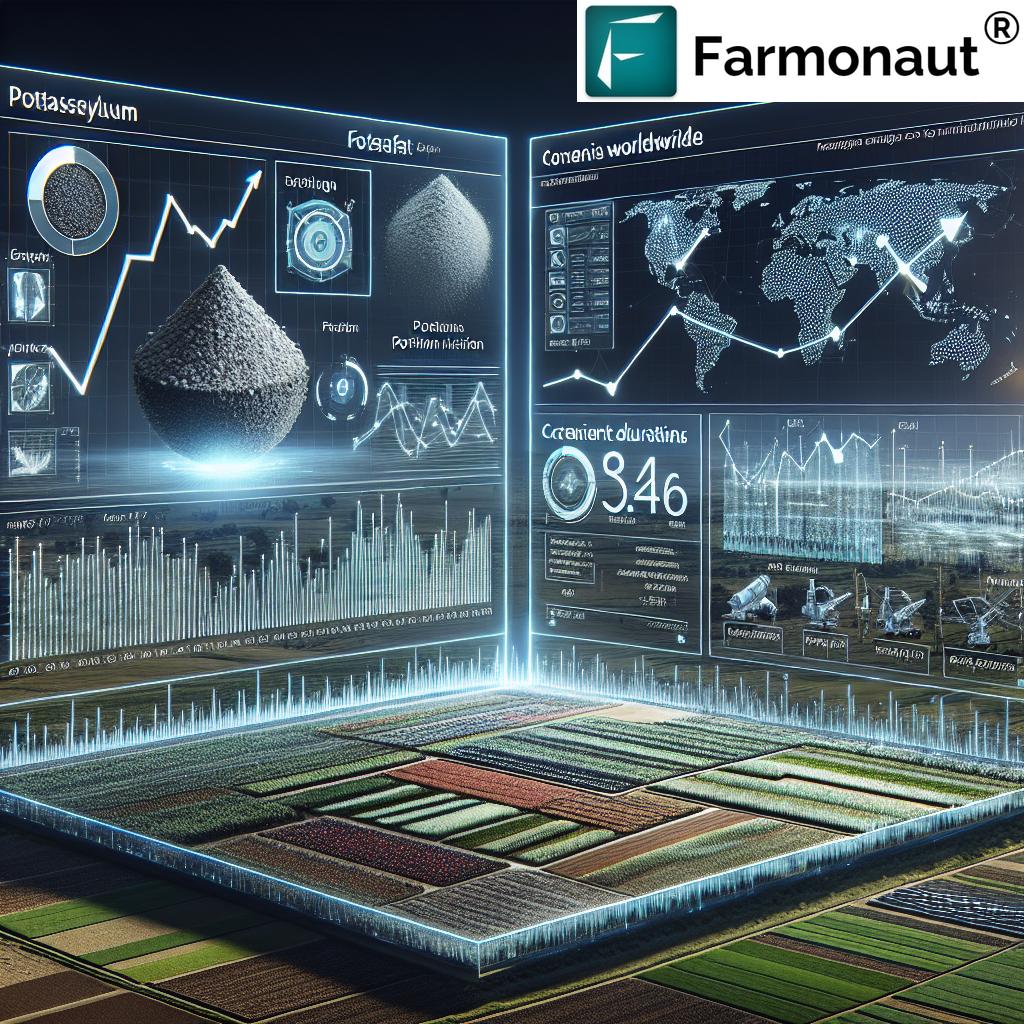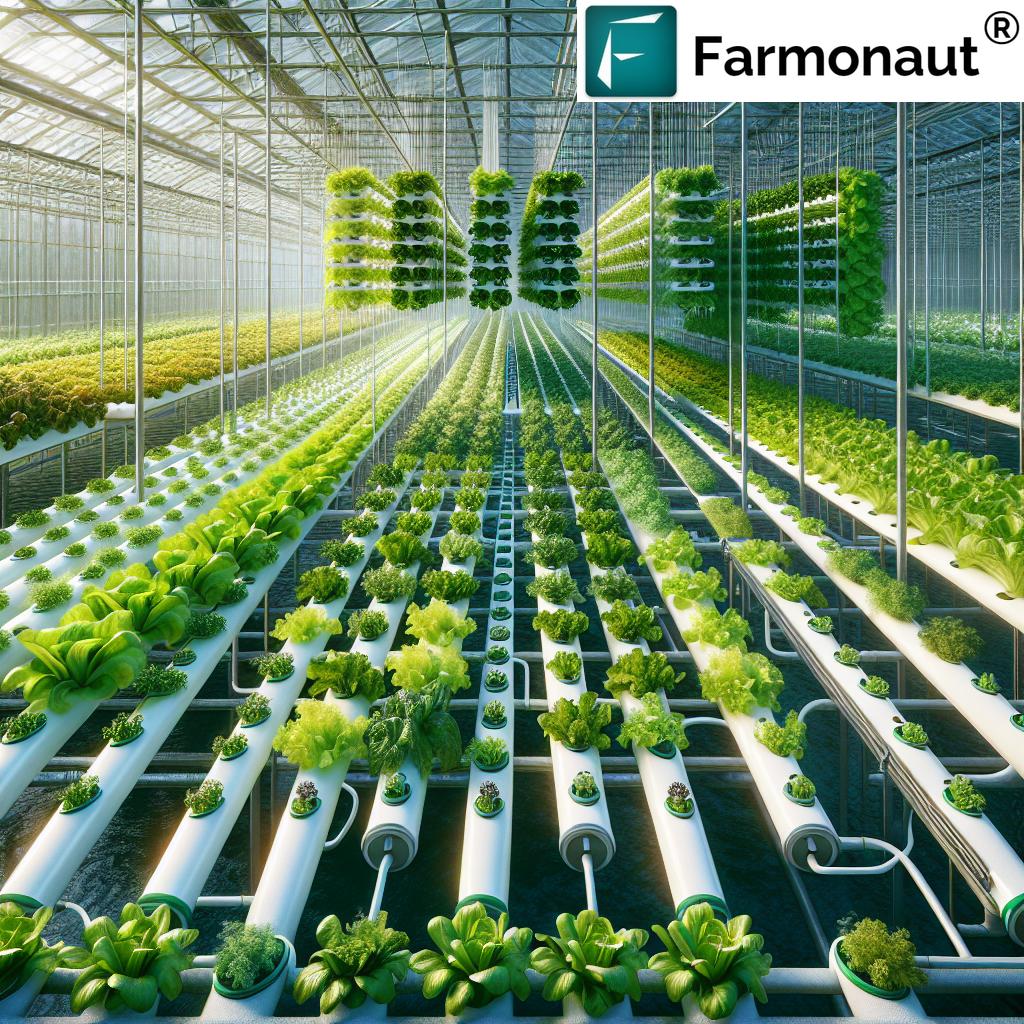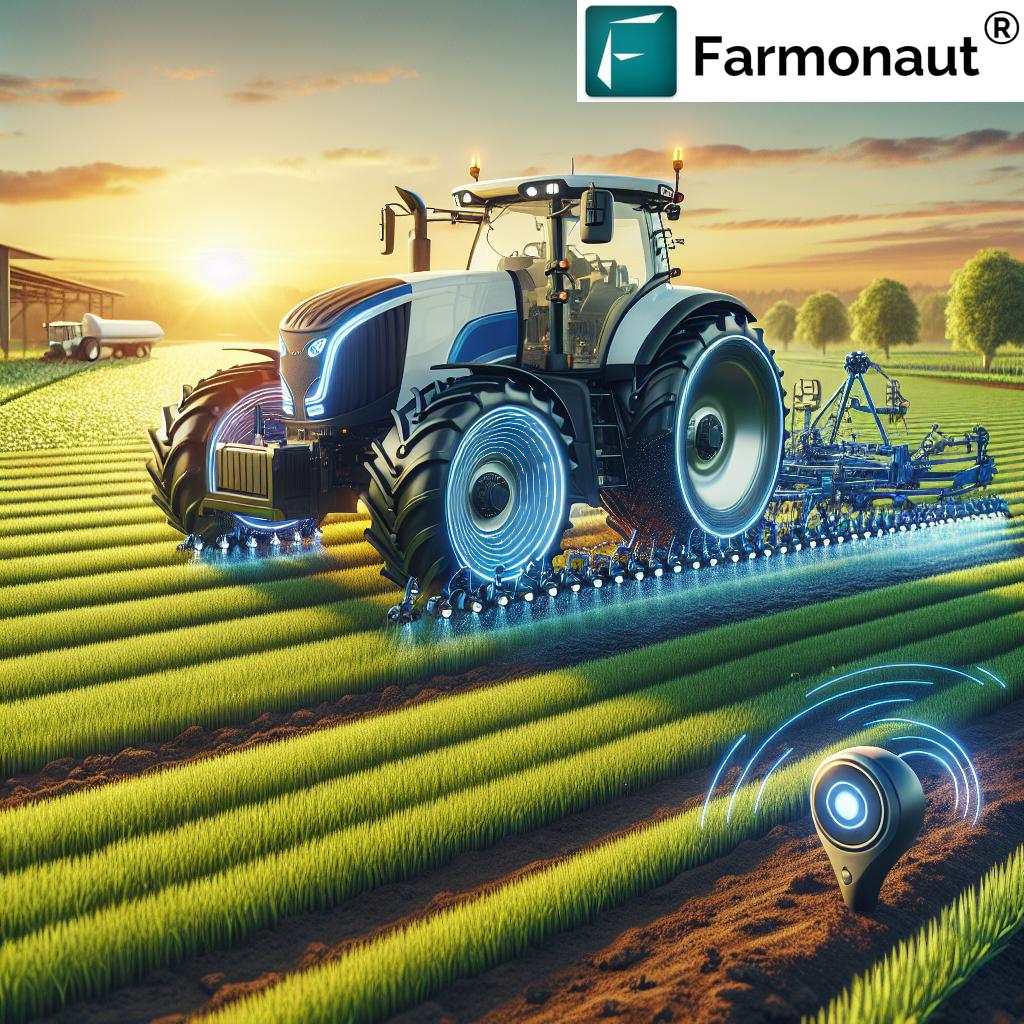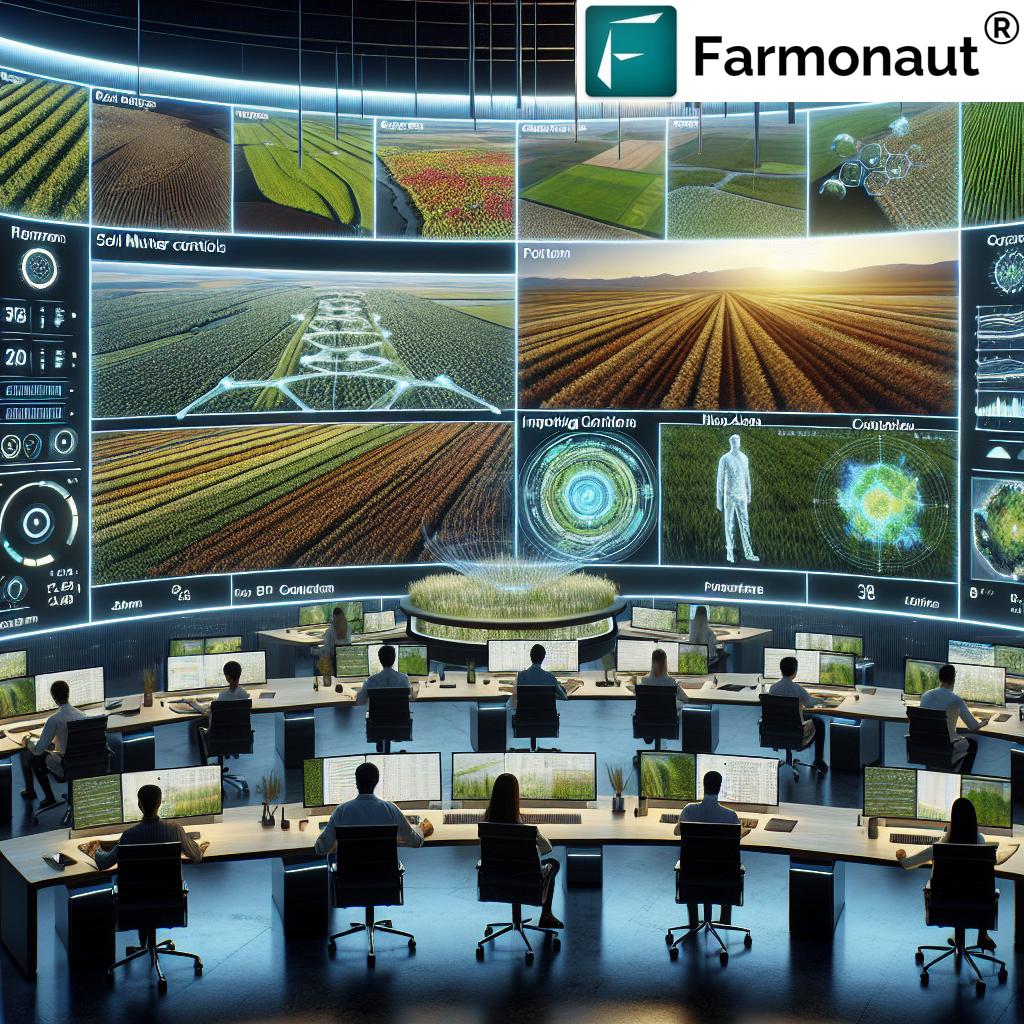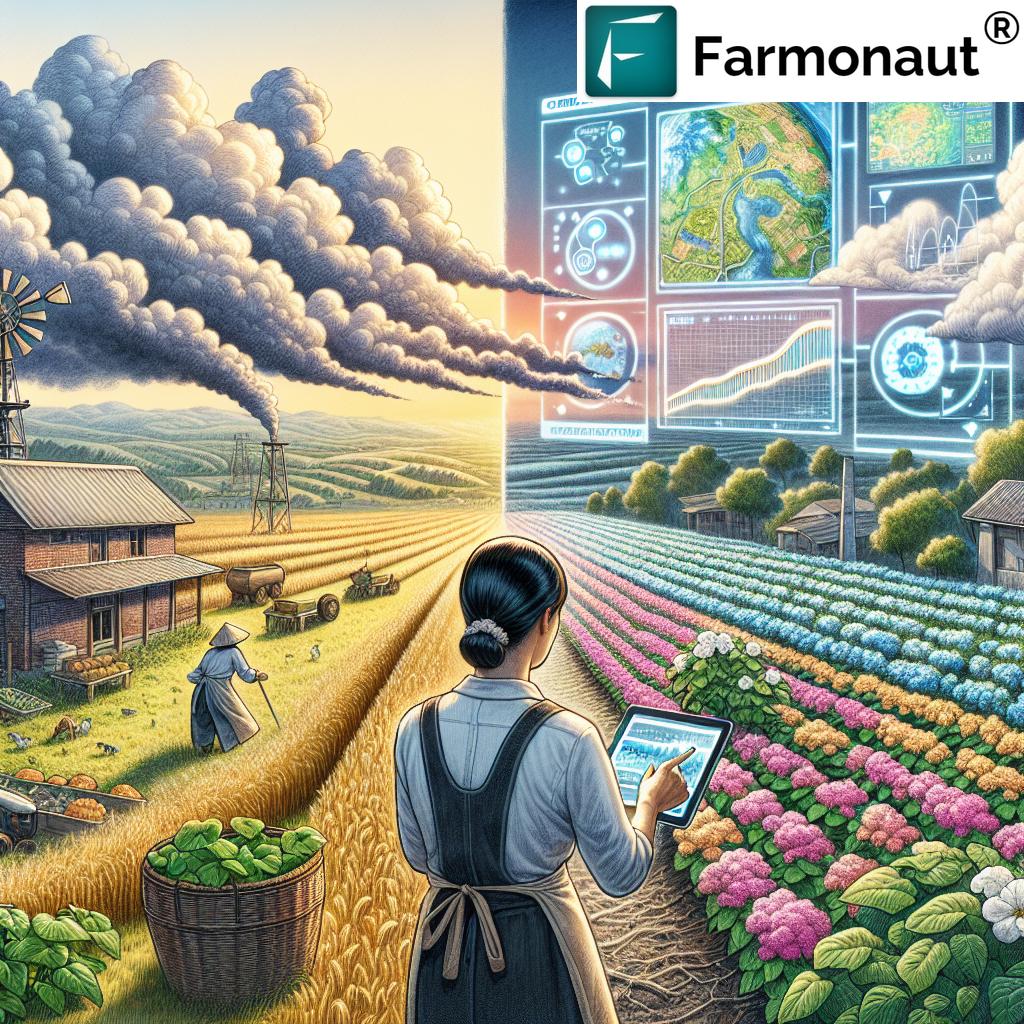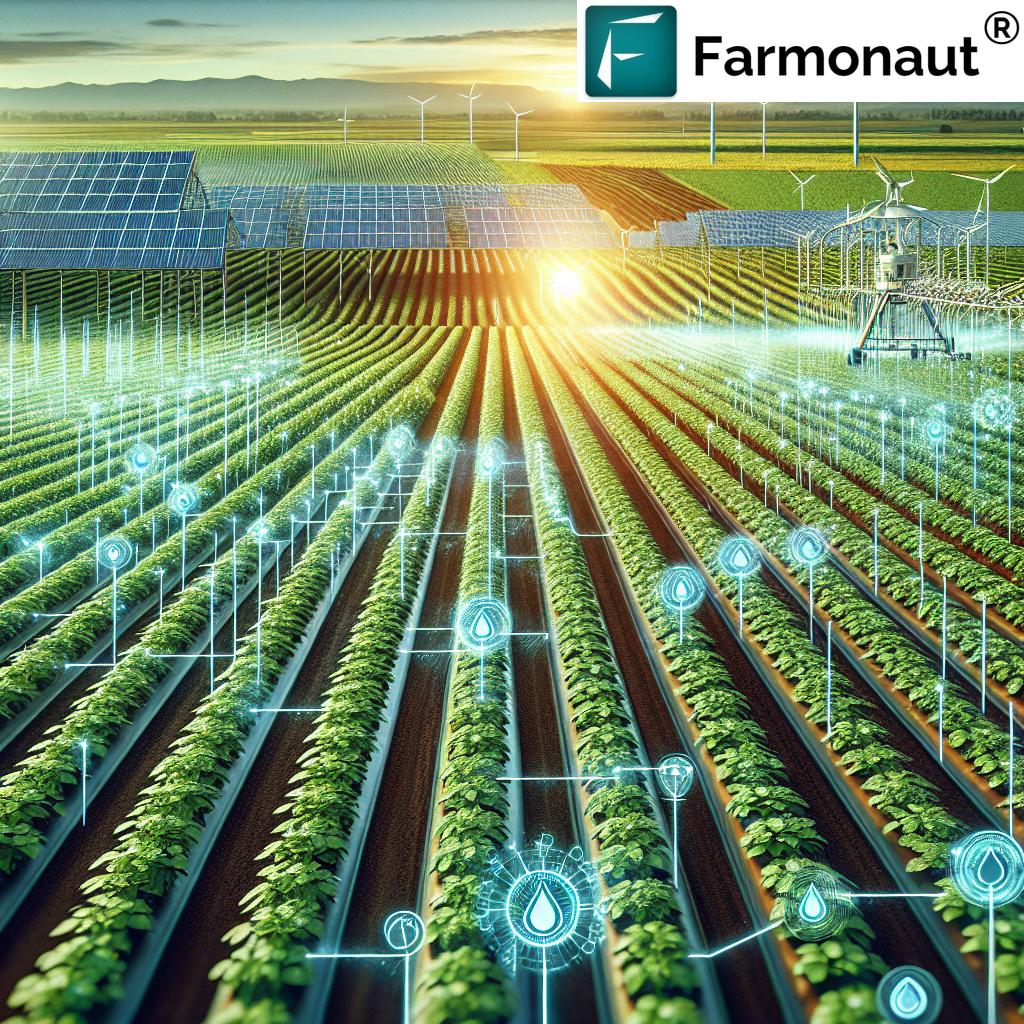Table of Contents
- Introduction: Transform Crops with Soil Moisture Sensors
- Did You Know? – Trivia #1
- Understanding Soil Moisture Sensors
- Types of Soil Moisture Sensors in Modern Agriculture
- How Soil Moisture Sensors Work
- Comparative Benefits: Sensors vs Traditional Methods
- Precision Irrigation: Crop Yield Optimization & Water Savings
- Best Practices for Implementing Sensors
- Farmonaut: Elevating Precision Agriculture Globally
- Farmonaut App & Solutions
- Fascinating Fact – Trivia #2
- Frequently Asked Questions
- Conclusion & Next Steps
Soil Moisture Sensors: Unlock Explosive Crop Yields Now!
“Soil moisture sensors can reduce water usage in irrigation by up to 30%, boosting sustainability in modern farming.”
Introduction: Transform Crops with Soil Moisture Sensors
As we embrace the era of smart agriculture, achieving efficient water usage in agriculture while ensuring crop yield optimization is not just a necessity—it’s an imperative for global food security and sustainable farming. Modern soil moisture sensors have emerged as pivotal tools, empowering us to precisely monitor, manage, and optimize irrigation and crop health. These intelligent devices use advanced technology to provide real-time soil data for farmers, enabling precision irrigation, resource optimization, and sustainability, particularly as we face growing environmental and economic challenges.
In this comprehensive guide, we’ll unravel everything about soil moisture sensors—from their types and working principles to the comparative benefits over traditional irrigation approaches and best implementation practices. We will also explore how platforms like Farmonaut are democratizing precision agriculture by integrating satellite data and AI-based insights into traditional farming practices.
Read on to discover how harnessing these technologies can unlock explosive crop yields, deliver significant water savings, and promote sustainable farming solutions—while keeping costs manageable for every farmer, everywhere.
Understanding Soil Moisture Sensors: Modern Farming’s Game Changer
Soil is the foundation of agriculture, but simply having soil is not enough—monitoring its moisture content is what enables us to achieve crop yield optimization and efficient resource use. This is where soil moisture monitoring becomes invaluable. Traditionally, farmers relied on guesswork or rudimentary methods to determine when to irrigate. These approaches led to over-watering, wasted water, nutrient leaching, and sometimes even stunted crops due to under-watering.
Today’s soil moisture sensors are sophisticated devices designed to measure the exact water content in the root zone of plants. By providing real-time data, they help us understand when, where, and how much to irrigate—making irrigation management both science-driven and sustainable.
At their core, these sensors help us tackle critical agricultural challenges:
- Prevent Under- and Over-Irrigation: Optimize water delivery to plant root zones.
- Improve Crop Health: Maintain a balance for plant development and health.
- Achieve Water Savings & Sustainability: Help in conserving water and reducing environmental impact.
Thus, integrating soil moisture sensors into our farming operations gives us a tangible advantage in today’s competitive and resource-conscious agricultural environment.
Explore precision agriculture and satellite-based yield estimation with Farmonaut’s innovative platform.
Types of Soil Moisture Sensors in Modern Agriculture
Soil moisture sensors can be broadly categorized according to their working principle and measurements they provide. Knowing the best soil moisture sensor types for specific soil, crop, and irrigation systems is crucial for achieving optimal results in modern agriculture.
1. Water Potential Sensors
These sensors measure the energy required for plants to extract water from the soil, thereby indicating the availability of water to plants. They are especially valuable for understanding how much effort the root system needs to access moisture.
-
Tensiometers:
Operating on the principle of suction, tensiometers are inserted into the soil and gauge the suction pressure (soil water tension or potential) plants must exert. They are highly responsive, particularly in soils with low to moderate tension, but require frequent checking and maintenance to ensure accuracy (agric.wa.gov.au). -
Granular Matrix Sensors:
Using a porous material (often gypsum), these sensors measure electrical resistance—which changes with water content. They’re cost-effective, offer lower maintenance, but might have slower responsiveness and less accuracy, especially in very dry soils (agric.wa.gov.au).
2. Volumetric Soil Moisture Sensors
These provide direct measurements of the volumetric water content—the actual amount of water in a given volume of soil.
-
Capacitance Sensors:
These measure the dielectric constant of the soil (which rises with moisture). Valued for their affordability, ease of use, and suitability for precision agriculture applications, capacitance sensors offer automated, precise readings for a range of crops (agrirevu.com). -
Time Domain Reflectometry (TDR) Sensors:
TDR sensors work by sending an electromagnetic pulse through the soil and measuring the time it takes the pulse to reflect back. The return time is affected by soil moisture, offering highly accurate data. Known for their accuracy and durability, they require a higher initial investment and specialized installation equipment (linkedin.com).
Capacitance vs TDR Sensors: Which is Best?
When considering Capacitance vs TDR sensors, the choice depends on our farming scale and budget:
- Capacitance sensors are more affordable and easy to use, widely adopted in precision irrigation for small-to-medium farms.
- TDR sensors offer higher accuracy and durability but are expensive and require technical expertise—best suited for research, large-scale operations, or high-value crop management.
See how Farmonaut provides time-lapse crop data, making soil and crop monitoring easier than ever.
Real-World Applications of Soil Moisture Sensor Types
- Tensiometers—Excellent for horticulture in sandy soils; require regular maintenance.
- Granular Matrix Sensors—Cost-effective for orchard irrigation or extended field monitoring where moderate precision is sufficient.
- Capacitance Sensors—Frequently used in row crops like corn, wheat, or vegetables for continuous soil moisture profiling.
- TDR Sensors—Favored by research institutes, agronomists, and commercial farms needing high-accuracy volumetric water measurements and robust data logging for varied crops and soils.
How Soil Moisture Sensors Work: From Soil to Systems
To optimize irrigation, it’s crucial to know what’s happening beneath the surface. Soil moisture sensors are installed at various depths within crop root zones. Most devices use electrical or electromagnetic principles to assess moisture content. Here’s a simplified workflow:
- Measurement: The sensor sends a signal (either a voltage, electromagnetic pulse, or applies a current) through the soil. The reading obtained changes based on moisture levels (thanks to the soil’s varying electrical resistance, dielectric constant, or time delay for returned signal).
- Data Transmission: The readings are either stored locally or transmitted wirelessly to a central system or cloud.
- Data Interpretation: Farmers view real-time updates on dedicated apps (like the Farmonaut web & mobile solutions), dashboards, or connected irrigation management systems.
- Automated Actions: Data can trigger automated irrigation events as soon as soil moisture thresholds are met—making precision irrigation fully scalable and hands-free.
Why Real-Time Soil Data for Farmers Matters
Access to real-time soil data allows us to identify when plants are stressed, track root zone saturation, and respond instantly to changing weather or crop conditions. This builds resilience, lowers labor costs, and ensures optimal plant health.
Discover how Farmonaut’s dashboard simplifies satellite-driven crop monitoring, soil analysis, and irrigation management practices for all.
Comparative Benefits Table: Soil Moisture Sensors vs. Traditional Irrigation Methods
| Feature | Traditional Irrigation | Soil Moisture Sensors |
|---|---|---|
| Estimated Water Savings (%) | 0–5% | 30–40% water savings |
| Crop Yield Improvement (%) | Baseline | 10–20%+ yield boost |
| Cost Efficiency | High ongoing water & labor costs | Lower costs over time (offset sensor investment) |
| Time Required for Monitoring | Manual, labor-intensive | Automated, real-time data |
| Environmental Impact | High water waste, risk of runoff | Promotes sustainability, reduces environmental footprint |
Choosing smart soil moisture sensors unlocks immense value for our farms by ensuring the most efficient water usage in agriculture and contributing directly to crop yield optimization.
See how Farmonaut’s satellite and AI solutions elevate farming with actionable crop, soil, and water insights.
Precision Irrigation: Crop Yield Optimization & Water Savings
Water is the lifeblood of agriculture, and its judicious use is more important now than ever before. Here’s how soil moisture sensors and precision irrigation are changing the game:
- Efficient Water Usage:
Real-time data helps avoid both over-irrigation (wasted water, nutrient leaching) and under-irrigation (plant stress, lower yield). Studies show soil moisture sensors can reduce on-farm water usage by up to 30% (hg-wwt.com). - Improved Plant Health & Yields:
Consistent, optimal irrigation ensures root development and plant health, leading to yield improvement of up to 20% compared to traditional approaches (hg-wwt.com). - Cost Savings:
Initial sensor installation costs are offset within a few seasons by savings in water, energy, labor, and fertilizers—all contributing to higher profitability. - Sustainability:
Water usage is optimized, soil health is preserved, and environmental impact is minimized—contributing to sustainable farming solutions.
By providing accurate, actionable data, soil moisture sensors not only save resources but also help us enhance yield, quality, and resilience—turning smart farming into a practical possibility for all.
Selecting the Best Soil Moisture Sensor Types for Your Farm
When deciding between capacitance and TDR sensors, consider these dimensions:
- Farm Size: Smaller farms and pilot projects often do well with capacitance sensors due to affordability and ease of installation.
- Required Data Accuracy: For crops with narrow tolerance windows or for compliance farming, TDR sensors provide unparalleled precision.
- Budget and Maintenance: Capacitance sensors have lower hardware costs and simple maintenance; TDR sensors require specialized staff and higher upfront investment, but deliver exceptional data stability and longevity.
Experience the power of satellite-driven crop and soil monitoring with Farmonaut: web, iOS, Android, and API at your fingertips!
“Precision irrigation with soil sensors can increase crop yields by as much as 20% compared to traditional methods.”
Farmonaut: Elevating Precision Agriculture Globally
Farmonaut is reshaping the agricultural landscape by making precision agriculture both affordable and accessible. Here’s how Farmonaut complements soil moisture monitoring:
- Satellite-Based Crop & Soil Monitoring: By integrating multispectral satellite data, Farmonaut allows us to get a comprehensive overview of our soil moisture, crop health, and even irrigation requirements—without costly ground hardware.
- AI-Powered Advisory: The Jeevn AI advisory system helps us interpret soil and crop data, offering real-time suggestions for optimal irrigation management practices, pest control, and fertilizer application.
- Blockchain Traceability: Ensures input and crop data remain transparent and trusted throughout the supply chain—delivering new value to food and textile industries. Learn more about Farmonaut’s product traceability solution for authenticated supply chains.
-
API & Integration: Developers and agribusinesses can integrate Farmonaut’s data-rich APIs into their own systems for seamless farm data flows.
Try the Farmonaut Satellite Weather & Soil API or browse our developer documentation. - Carbon Footprinting: Monitor and reduce environmental impact with Farmonaut’s Carbon Footprinting tool—ideal for large-scale agribusinesses seeking compliance and healthy stewardship of resources.
- Fleet & Resource Management: Get end-to-end visibility and control over farm vehicles, reducing fuel, labor, and time wastage. Large operations benefit from Farmonaut’s Fleet Management system.
- Large-Scale & Plantation Management: The Agro Admin app brings together plantation monitoring, field logistics, and precise agri-advisory.
- Crop Loans and Insurance: Farmonaut empowers financial institutions to use satellite data for crop loan and insurance verification, providing farmers with quicker and more transparent access to funding.
The platform serves individual farmers, agribusinesses, governments, and corporate clients. All can benefit from real-time, accurate soil and crop data for informed decision-making.
Leveraging powerful technologies, Farmonaut is a beacon for sustainable farming solutions, ensuring that resource management is both simple and scalable.
Start Your Journey: Farmonaut Subscription Plans
Best Practices for Implementing Soil Moisture Sensors
Adopting soil moisture sensors requires a strategic approach to ensure data accuracy and meaningful (profitable) outcomes.
- Proper Sensor Placement:
- Place sensors at multiple locations and depths (root zone representative), e.g., between plants for row crops, in the root mass center for orchards/vegetables.
- Avoid installation near field edges, wheel tracks, or unrepresentative patches.
- Calibration:
- Calibrate sensors as per manufacturer guidance before every growing season and re-check after significant weather events or soil changes.
- Calibration ensures consistent accuracy across various soil types (e.g., sandy, loam, clay).
- Data Integration:
- Connect sensors to automated irrigation systems (drip, sprinkler, etc), using real-time readings to trigger irrigation events.
- Use pre-set soil moisture thresholds to automate water delivery and ensure precise system actuation.
- Maintenance:
- Check for debris, rodent damage, corrosion, and perform regular software/firmware updates.
- Periodic replacement or recalibration may be needed, especially in high-wear applications.
- Training & Technical Support:
- Provide staff (or learn) training in sensor data interpretation—as this helps avoid irrigation errors and realize the full ROI of data-driven farming.
Challenges and Considerations in Sensor Deployment
- Initial Costs: While hardware and installation investments can seem high, they are offset by long-term water, energy, and crop savings.
- Technical Expertise: We recommend initial training or support from agronomic advisors to unlock the full value of soil data streams.
- Ongoing Maintenance: Regular checks, cleaning, and recalibration are required to maintain system integrity. Advanced platforms like Farmonaut can help reduce the need for manual fieldwork by supplementing ground sensors with satellite analytics.
Tips for Maximizing Sensor Investment
- Combine soil moisture sensor data with satellite-derived indicators (NDVI, weather trends) for robust, multi-layered water management.
- Review data weekly to refine irrigation schedules—use Farmonaut’s cloud dashboard for historic trend analysis.
- Document savings and yield improvements to qualify for insurance discounts or sustainability financing.
Frequently Asked Questions on Soil Moisture Sensors
1. What is the primary purpose of soil moisture sensors?
Broadly, soil moisture sensors help us measure the water content in soil, giving valuable data for efficient irrigation, crop yield optimization, and sustainable farm management.
2. How do I select the best soil moisture sensor type for my crops?
Choose based on accuracy, maintenance, budget, and crop requirements:
- Tensiometers – great for responsive, shallow root crops.
- Granular Matrix – low cost and moderate accuracy for large orchards or extensive fields.
- Capacitance – affordable, suitable for most field crops.
- TDR – required for research or high-value crops needing best-in-class precision.
3. Can soil moisture sensors be automated with my irrigation system?
Yes! Sensors are often integrated with smart irrigation systems, automating watering based on real-time soil data and user-defined thresholds, boosting efficiency and labor savings.
4. What are the primary maintenance activities for these sensors?
Regular cleaning, recalibration each season, replacing faulty sensors, and ensuring data connectivity are the main maintenance tasks.
5. How does Farmonaut support sensor-based farming?
Farmonaut’s platform provides real-time satellite and AI-powered soil, crop, and weather data, which strengthens decision-making and allows for better irrigation management practices, especially when deployed alongside ground-based soil moisture monitoring devices.
Conclusion & Next Steps: The Future of Farming is Data-Driven
Soil moisture sensors are now pivotal in modern agriculture, providing the accurate, real-time data required to make irrigation and resource management truly precise and effective. By deploying the best soil moisture sensor types for our unique needs, and adopting best practices for placement, calibration, and integration, we can unlock explosive crop yields, efficient water usage, substantial cost savings, and long-term sustainability.
Farmonaut’s satellite and AI-powered platform amplifies these benefits—making advanced crop, soil, and resource monitoring accessible to all farmers and agri-operators. By integrating soil moisture data with other critical farm metrics, we are empowered to drive productivity, safeguard the environment, and future-proof agricultural incomes.
Ready to optimize your yield and embrace sustainable farming? Get started with Farmonaut’s app platform or API and discover how technology can transform your soil, crops, and bottom line!


